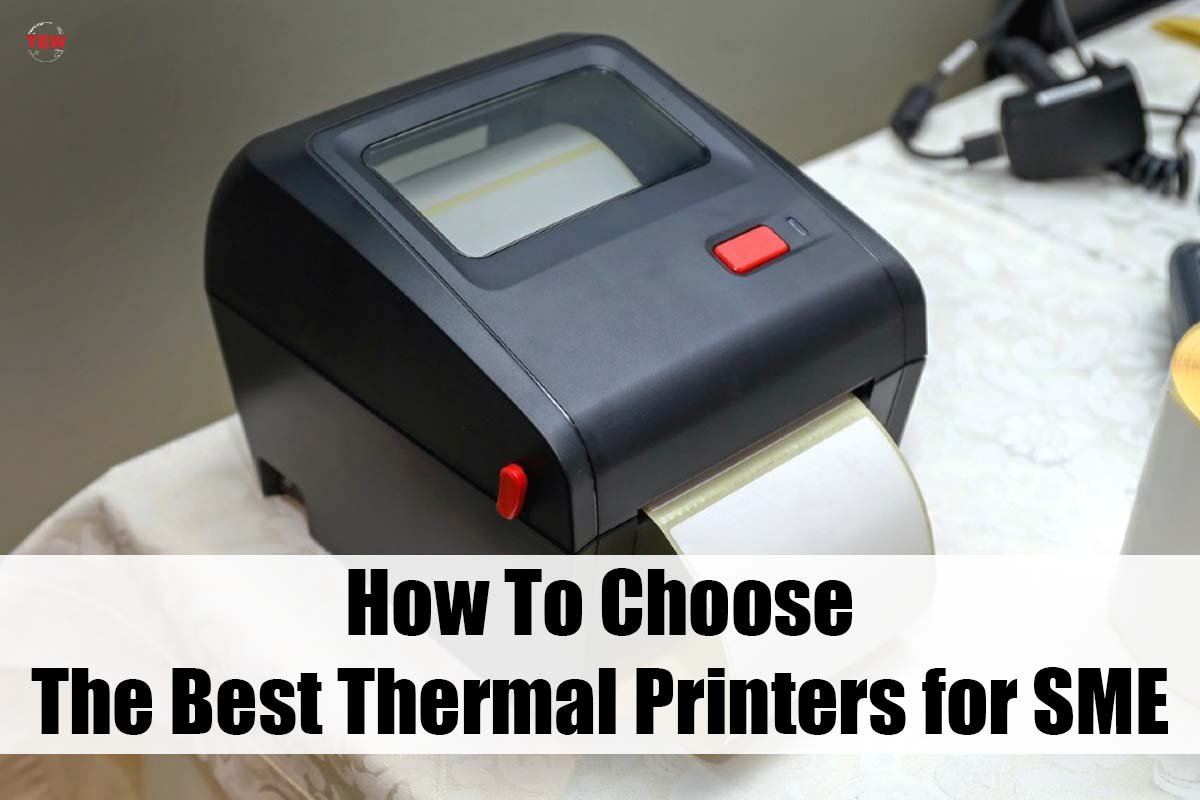Thermal Printers for SMEs may not be a familiar term that comes up in general conversation, but for small to medium enterprises, a thermal label printer is a critical piece of toolkit that allows them to operate their business efficiently and effectively.
As shipping labels are a must-have for all businesses, ensuring you have the best quality printers to match your business operations and needs is a vital component to continued success.
What is Thermal Printers for SMEs?
In simple terms, thermal printing is a process in which an image is created by using heat. Instead of using ink, like a traditional printer, these printers use specific materials like labels or sticker rolls, which react to a certain level of heat.
There are two different processes: direct thermal printing and thermal transfer printing. Direct thermal printing produces an image by selectively heating thermal paper, while thermal transfer printing utilises a specific heated ribbon to create images. A massive advantage to thermal printing is the ability to use different materials like paper, ribbons, and tape on which to print.
Benefits of Thermal Printers for SMEs:

Switching to Thermal Printers for SMEs label printing produces multiple benefits for large and small businesses, regardless of the industry in which you operate. The most significant advantages will help save time and money for your company.
1. Fast Delivery of Documents
When tackling a large printing job, a standard ink printer can take a noticeably long time to make its way through each copy. In all businesses, time wasted equates to money lost, and faster printing would allow employees to work through orders at a higher frequency.
Thermal Printers for SMEs takes just seconds to complete, meaning those operating in warehousing, retail and the food service industry can serve more customers quicker. This is vital for turnover and increased business.
2. Environmentally Friendly
Thermal Printers for SMEs helps reduce the usage of ink and other non-recyclable waste, making it an environmentally friendly and sustainable option. Furthermore, the overall shipping weight is much lower, meaning the product’s carbon footprint is also reduced.
These printers are essential for those wanting to break into greener business operations and ethics. In today’s corporate environment, going green plays a significant role in a company’s ability to stay competitive in a market favoring green business practices.
3. Reduced Printing Costs
A big motivating factor for many big businesses switching to direct thermal printing is the lower cost per print. If your company produces a large number of labels, receipts, or merchandise documents, finding a more cost-effective solution can save an enormous amount of money.
In addition to bypassing expensive ink cartridges and ribbons, the cost of maintenance for direct thermal printers is significantly less.
4. Better Efficiency
An effective workflow within a company must be seamless and with little interruption. Something as simple as a malfunctioning printer can stall an entire production line and distract staff from productivity to fix the problem.

With increased speed, delivery, and reliability, your workforce can concentrate entirely on their assignments. In addition, if you do rely on outside maintenance, you will reduce the disruptive nature of maintenance specialists within your establishment.
What to Consider in Thermal Printers for SMEs?
You may have settled on switching to thermal printers for your business, but like all devices and office equipment, there are multiple versions available from which to choose. To make the right decision for your business needs, you need to consider the more specific features you are looking for.
1. Print Method
Before buying any machine, the print method that best suits your establishment needs to be decided. In thermal printing, you have direct thermal and thermal transfer options from which to choose.
Direct thermal printing is seen most often with receipts in the retail industry. The most significant benefit of this method is the reduced cost, as no ink or printer ribbon is required. The only component that will require maintained upkeep is the label stock.
Thermal transfer printing involves using heat to chemically bond ink to a label, which can be in the form of stickers, packaging, or padded envelopes, to name a few. This does come at a cost, as these printers require constant replacement of printer ribbons.
2. Compatibility
A small business that values speed and efficiency may be more tempted by direct thermal printing, as sticker labels or receipts that don’t require a long shelf life are perfectly suited for this method.
On the other hand, thermal transfer printers will be your go-to choice if your business relies heavily on higher-quality labels, like barcodes, and must work with different packaging materials and supplies.
3. Required Label Size
The required label size is another crucial factor to consider when selecting a thermal printer. Direct printers favour small-sized copies, whereas transfer printers have the flexibility to suit whatever size is required.

4. Print Speed & Volume
When comparing printing speed and effort, direct Thermal Printers for SMEs is noticeably quicker and requires less maintenance. All that is required is swapping out label stock and cleaning the print head and platen roller.
Thermal Printers for SMEs transfer printing is more precise and time-consuming as the quality of the image is significantly increased. It also needs insight from the user to know which ribbon will work best for the job, which can become a deal-breaker for those needing a speedy option.





